WhatsApp vs. Email Marketing: Choosing the Right Strategy
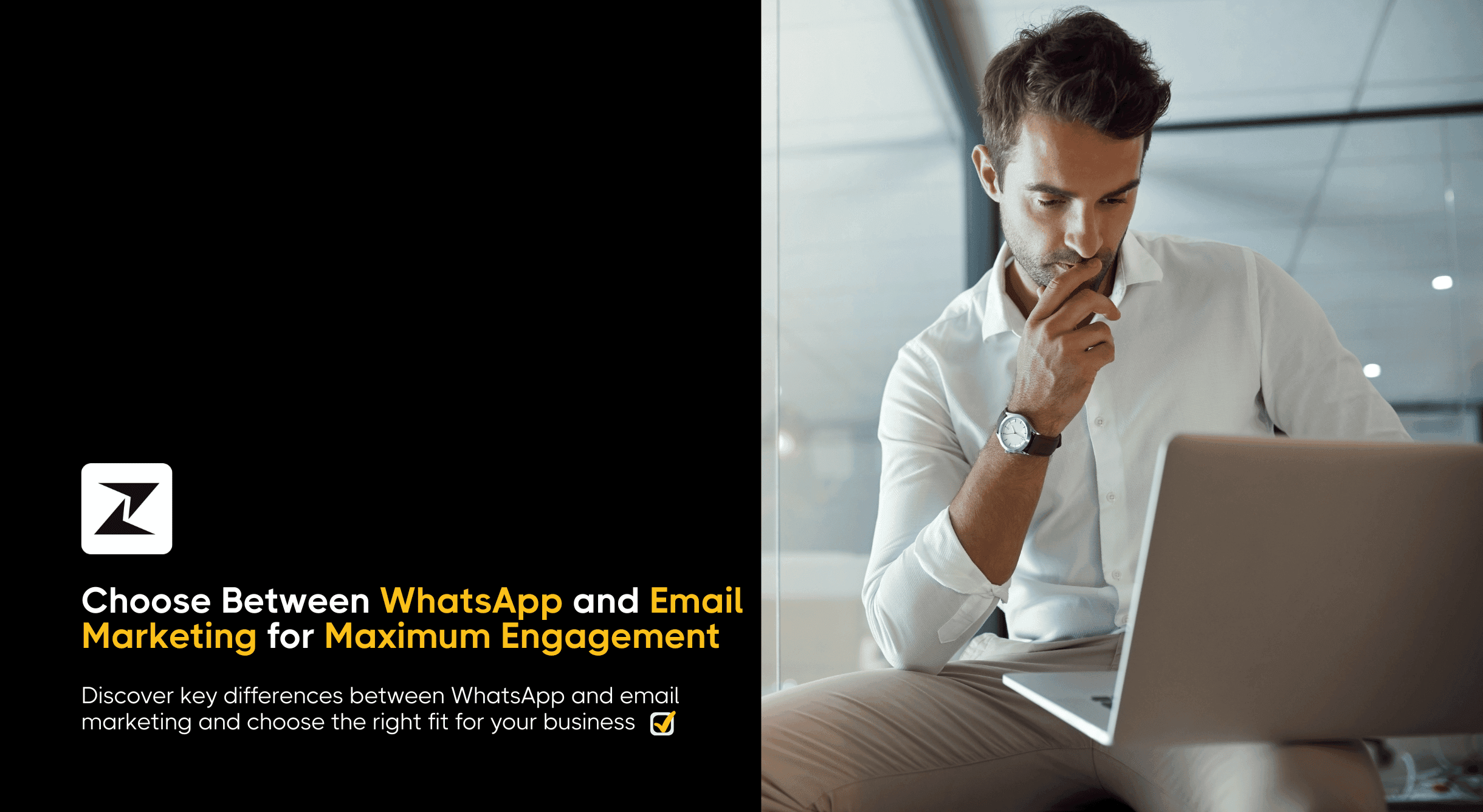
If you are running a business or managing marketing for one, you know the importance of using multichannel marketing practices to reach out to your customers. Having numerous avenues to connect with customers allows you to build stronger relationships and drive engagement for your business.
Using a combination of traditional and modern communication channels can let you boost your overall customer engagement. With that said, email and WhatsApp are tried and tested channels you can use to market your products.
However, choosing a channel between WhatsApp and email can be a challenging task. That is why, in this comparison post, I will talk you through the differences between these channels and which one can be a great choice to scale your brand.
Email marketing: The channel that started it all
Ever since email became publicly accessible, companies, both physical and e-commerce, have been using it to market their products or services and compelling their customers to shop, engage, and interact with them.
In simple terms, email marketing revolves around sending personalized messages containing marketing content, information updates, newsletters, and company alerts straight to the inboxes of your contacts.

On top of that, you can leverage drip email marketing to automate and space your emails to better nurture your leads and direct prospects across the sales funnel.
All in all, email marketing is a great way to interact with your customers, boost engagement, get sales, and expand your reach.
Even though email marketing offers multiple advantages, people have become desensitized to receiving marketing emails and started to ignore them. In fact, the average open rate for marketing emails has stayed at around 36%. However, if you are using emails to send verification codes or meaningful content, you can still use this channel to your advantage.
WhatsApp marketing: A digital channel of today
An aspect that is missing from email marketing is personalization. You cannot have a tailored one-on-one conversation in real time over emails. To do that, you need an advanced marketing channel that allows conversations in real-time. And this is where WhatsApp comes in!
WhatsApp marketing, as the name suggests, is all about utilizing the WhatsApp Business Platform to run promotional initiatives to engage customers via tailored messages, offering customer assistance, and having 1:1 chats with customers.
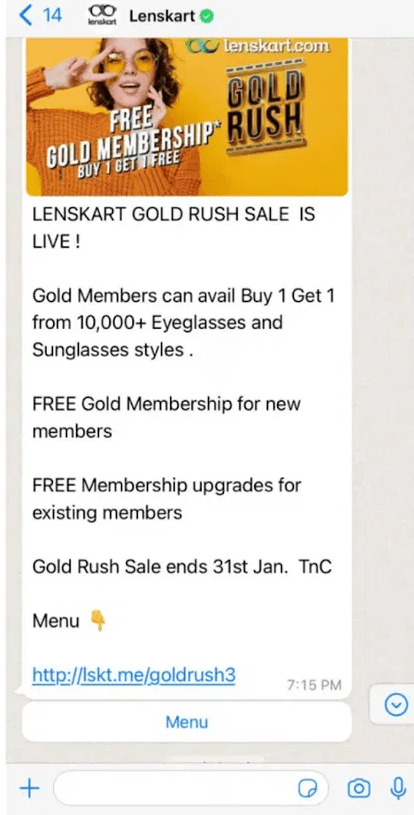
Furthermore, unlike emails, you can create group chats in WhatsApp, known as WhatsApp Groups to interact with multiple people at the same time. One more interesting feature of WhatsApp is that you don’t have to send and receive one message at a time.
WhatsApp chats appear as a thread rather than individual messages, allowing you or your customers to go back and look at previous messages. This way, you don’t have to repeat the same information multiple times and can keep the conversation fluid.
In addition to that, being a modern communication channel, WhatsApp lets you automate your marketing and messaging with WhatsApp Business API and AI-powered chatbots. Using these bots, you can reply to customer messages without having to manually write and send responses.
These chatbots can be trained to send text messages, visuals, videos, or documents, delivering quality customer service with minimal human intervention. These are only some of the marketing capabilities of WhatsApp. It also includes extra features such as:
To get started with WhatsApp marketing and make the most of it, you need a WhatsApp API provider like Zixflow. With Zixflow, you can reach out and engage thousands of contacts with a single campaign. Being a Meta-partnered solution, Zixflow lets you run WhatsApp initiatives with its code-free campaign builder.
The builder lets you connect with as many customers as you want by simply entering their phone numbers, selecting a WhatsApp account, and choosing a messaging template.
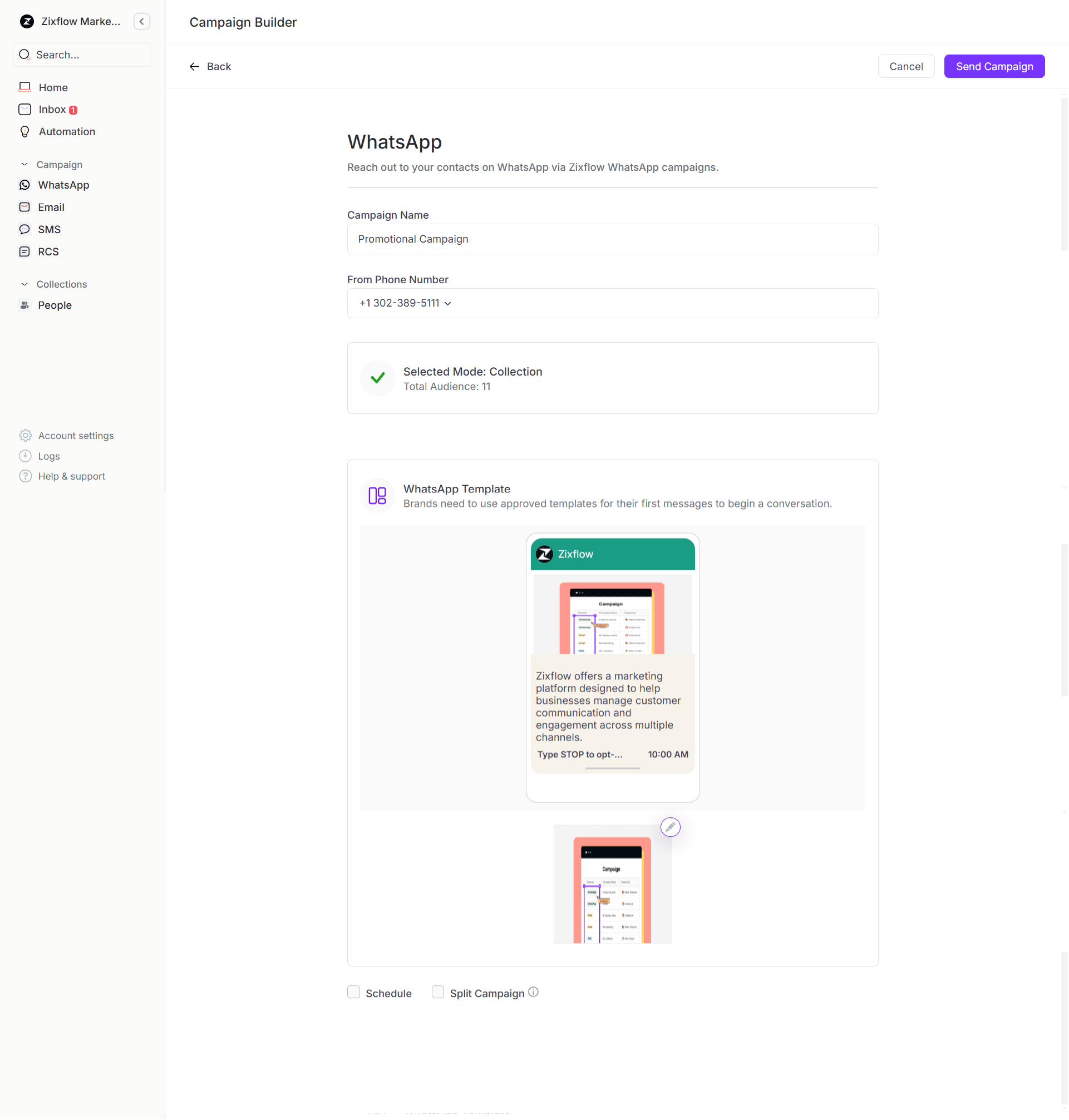
Additionally, Zixflow includes automation functionality to let you automate your marketing messaging over WhatsApp. Using the trademark automation editor, Flows, you can build a WhatsApp chatbot to keep your customers engaged 24/7.
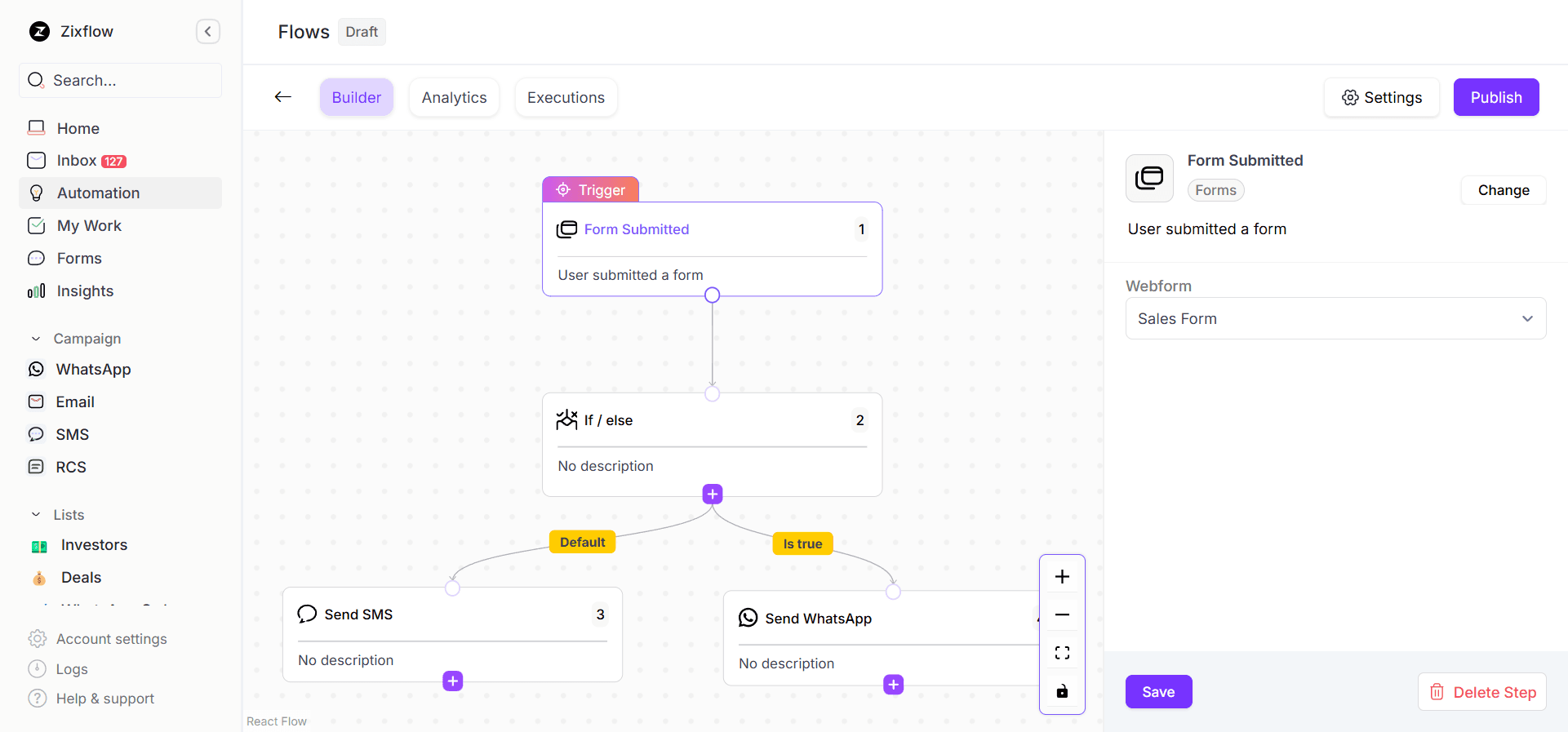
That is not all. If you are running an e-commerce business, you can send WhatsApp Flows to engage your customers with interactive messages and compel them to take action directly from the app. This amazing feature allows you to drive conversions.
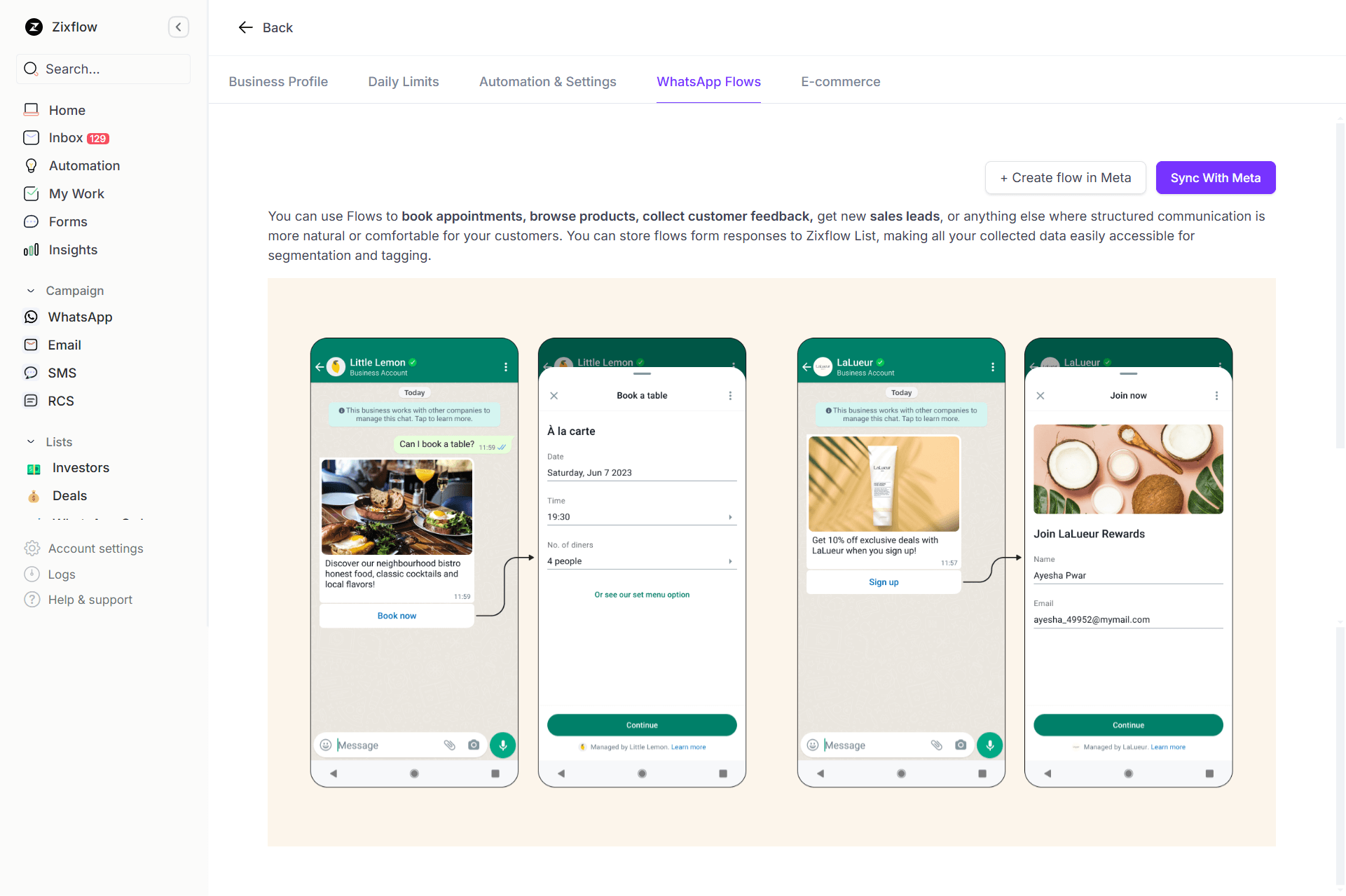
WhatsApp vs. email marketing: What’s the difference?
Now that you are aware of what WhatsApp and email marketing mean, it’s time to take a look at the factors differentiating them from each other. Before you can choose which one to implement in your marketing strategy or go with both of them, here are some things you need to consider.
Engagement metrics
The channel you choose should have relatively high sales engagement metrics to let you maximize your marketing ROI and boost your bottom line. Having said that, below are some of the metrics you have to monitor to ensure your campaigns are effective in the long run.
Open rate
The biggest factor that makes WhatsApp a significantly better channel than traditional email marketing is its engagement rate. WhatsApp messages have an open rate of an unbelievable 99%. The reason for such an astronomical open rate is that WhatsApp messages are interpersonal in nature, facilitating quick transfer and exchange of messages.
On the other hand, email inboxes are usually full of spam and promotional messages that rarely add any value to users. This is why, they are not readily opened by customers, resulting in lower engagement and conversion rates. So, to improve email security and authentication, applying DMARC rules helps verify your email domain’s integrity, ensuring your messages are trusted and more likely to reach your audience’s inbox.
Click-through rate
The click-through rate represents how many users out of the total your entire marketing list are clicking on CTA buttons or links and are being directed to your website.
Now if I talk about numbers, the click-through and conversion rates of WhatsApp range between 45 to 60%. Once again, this increased CTR of WhatsApp is because of its highly tailored messaging and the ability of users to immediately take action after receiving a message.
In contrast to that, emails have lower open rates and people are more reluctant to click on links received via promotional emails. That being said, the conversion rate for email marketing stands at roughly 2 to 5%.
Spam/ junk inboxes
Since email has been around for a long time, people and businesses started to spam their customers in hopes of getting quick sales or building a loyal following for themselves. However, it had the opposite effect, where customers started to ignore these promotions or tag them as spam.
WhatsApp, on the other hand, does not allow businesses to spam its users by implementing quality checks and messaging guidelines. Failure to adhere to these regulations can result in a temporary or permanent ban on your WhatsApp account. Plus, there is no spam or junk inbox for WhatsApp messages, allowing customers to see all of your messages.
Looking for a marketing platform for email and WhatsApp marketing efforts?
Get started with Zixflow, an omnichannel marketing suite with native CRM and automation capabilities for streamlined outreach.
CRM and automationMarketing features
The way you design your marketing messages varies for both email and WhatsApp. WhatsApp messages don’t require that much effort to craft them. But emails need significant effort to create marketing messages. Additionally, the subject line and content of the emails require more thought compared to WhatsApp.
On top of that, WhatsApp supports more multimedia messaging features, including images, videos, files, GIFs, and audio messages. Emails only allow you to add images and files less than 25 MB.
Having said that, you can use Zixflow to craft both emails and WhatsApp messages effortlessly. The email editor of Zixflow is powered with AI to let you craft engaging subject lines and email copy within a matter of minutes.
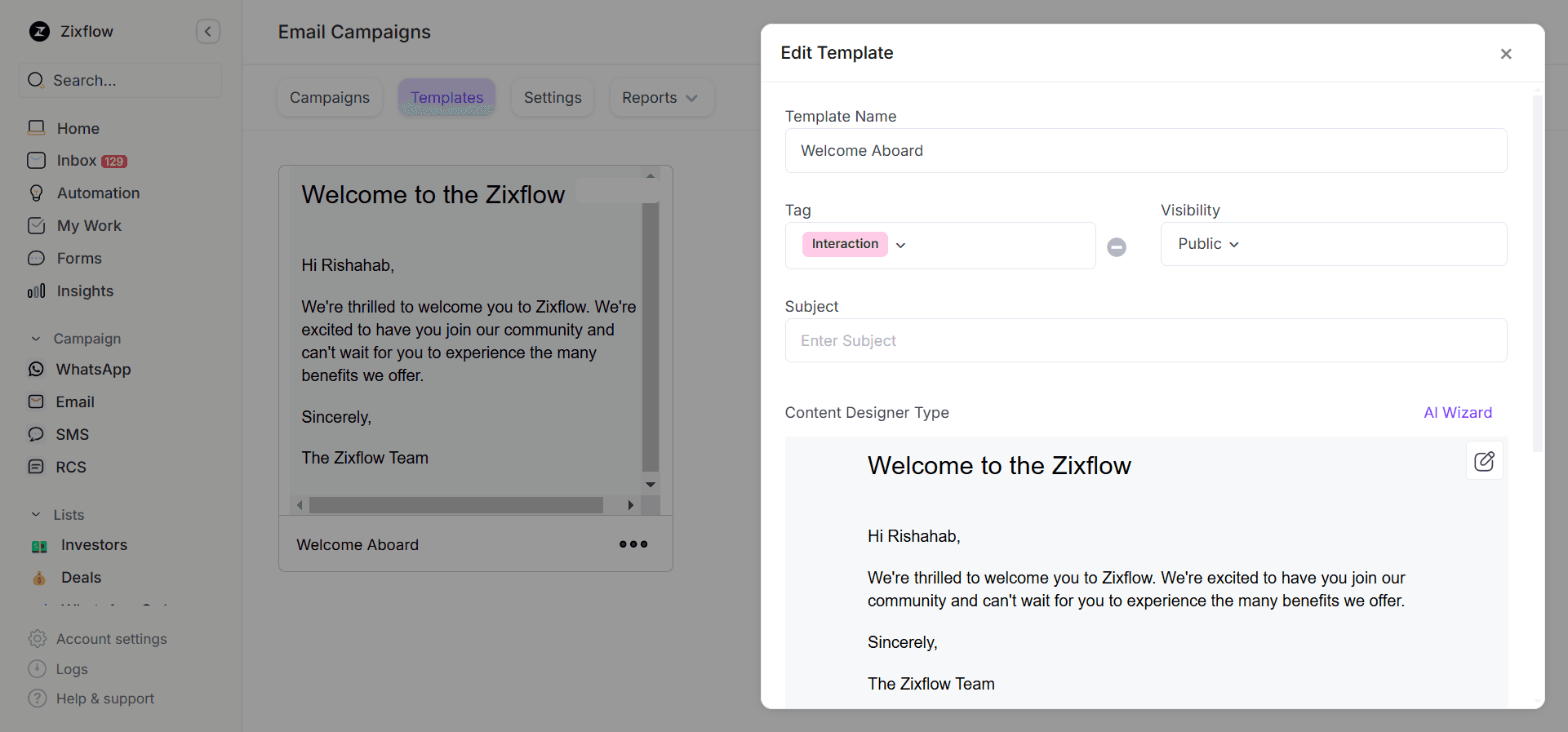
To compare WhatsApp and email marketing at a glance, here is a table comparing their pros and cons along with the features:
| Features | WhatsApp Marketing | Email Marketing |
|---|---|---|
| Messaging type | Semi-formal or formal | Conversational & personal |
| Open rates | 99% | 36% |
| CTR rates | 45-60% | 2-5% |
| Secured channel | Messages are secured with end-to-end encryption. | Emails are not secured and can be interrupted during transmission. |
| Customer responsiveness | Very high, this is because WhatsApp messages are readily accessible. | Low, because customers check their emails during free time. |
| Advertisement support | Click-to-WhatsApp ads | Promotional emails are marked and sent to a separate inbox. |
| Junk or spam folder | No | Yes |
| Rich messaging features | Typing indicators and read receipts. | No |
| Integration with business tools | Yes, WhatsApp API can be integrated with external tools for enhanced marketing capabilities. | Yes, email accounts can be synced with marketing platforms for quick |
| User engagement | High | Low |
| Verified profiles | You can get a verified green checkmark for your WhatsApp account. | You cannot get any kind of verification mark for email. |
| Device types | Web and mobile devices | You can run email marketing campaigns using a marketing platform. |
WhatsApp or email: Which channel is better for you?
Both WhatsApp and email marketing have their pros and cons to interact with customers and promote your offerings. Although WhatsApp provides an instant and personal channel, email allows you to engage customers with much more tailored content.
The biggest factor you should weigh when choosing between WhatsApp or email depends on your marketing objectives. However, if your audience consists of people using both email and WhatsApp, you can go for both and leverage a multichannel engagement strategy to maximize your ROI.
Having said that, tools like Zixflow offer an omnichannel marketing feature that includes RCS and SMS on top of WhatsApp and email. With us, you can get started with your promotional initiatives without worrying about knowing any coding information.
The platform is super user-intuitive and easy to use, allowing you to start making the most of it from the get-go. The marketing campaign builders are self-explanatory and support bulk WhatsApp message sending facilities. Additionally, pairing these capabilities with Zixflow’s modern features like robust dynamic contact management, unified inbox, and AI-driven automated workflows for streamlined engagement.
So, sign up for a free Zixflow account and take advantage of a 7-day free trial to look and feel the outreach features. This way, you can find the right channel among the multiple ones offered by Zixflow or use all of them for all-around customer engagement.
